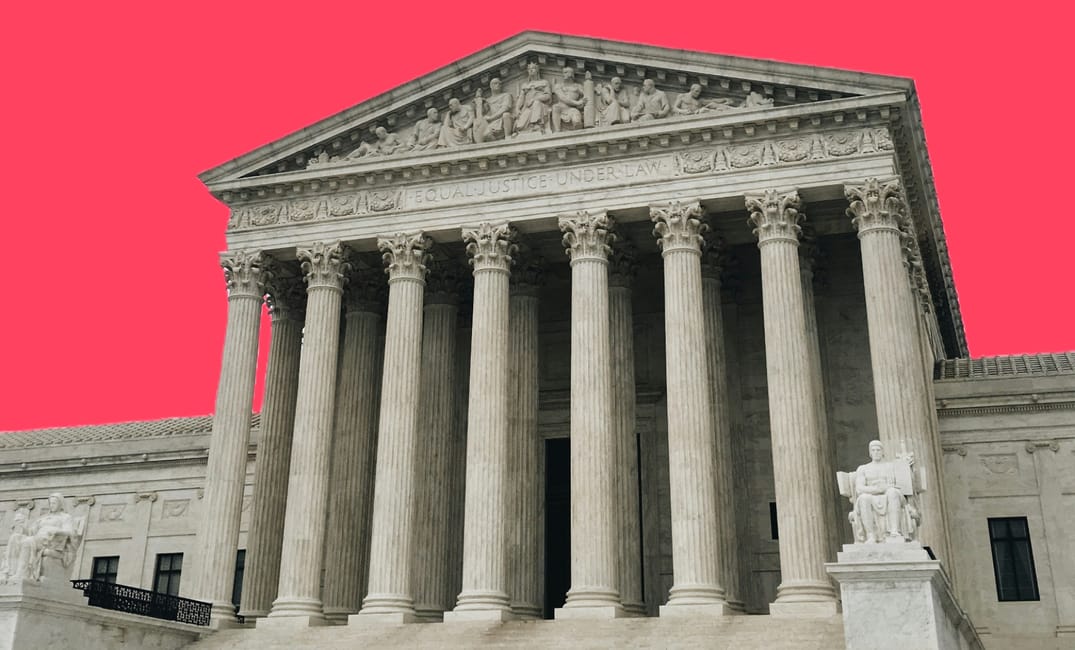Ruth Parsons
There is A LOT currently going on in American politics. Trump’s recent hospitalisation, the unchecked spread of Coronavirus and the death of the Supreme Court Justice Ruth Bader Ginsburg has meant that the upcoming Presidential Election will be anything but boring.
Why is RBG’s death significant?
You may have seen some of the headlines when Supreme Court Justice Bader Ginsburg died and thought, “What’s the big deal? Why are so many people bothered about this?”. It matters because President Trump gets to choose her replacement, and whoever he chooses gets to sit on the Supreme Court for life.
What is the Supreme Court?
The Supreme Court is one of the three arms of the US federal government. This means that it has a similar level of power to the President and Congress, but its members are not democratically elected by the people.
The Supreme Court’s main function is deciding whether laws are “constitutional” and in agreement with what the American Constitution says. If laws are found to be unconstitutional, they are immediately removed. It doesn’t matter whether the President, Congress, or a particular state implemented the law, if the Supreme Court rules that it is unconstitutional, then it’s got to go.
Some of the most famous examples of the Supreme Court striking down laws include Roe v. Wade in 1973, which legalised abortion throughout the US, and Brown v. Board of Education in 1954, which abolished segregation in schools.

How is a new Supreme Court Justice Chosen?
The Supreme Court clearly has a lot of power because it is responsible for holding the President and Congress to account. This means that the people who make up the Supreme Court are also pretty important. There are normally nine Supreme Court Justices who make the decision on whether laws are “constitutional” or not. Judges are life-tenured, which means they serve until they die or resign. This is why before any Justice is appointed, they have to go through a rigorous procedure called the “Confirmation Process” that checks to see whether they are qualified enough for their position.
Firstly, the current President, after a Justice has resigned or died, will nominate a replacement. This decision is announced to the press, and the nomination is formally sent to the Senate, the upper chamber of Congress. The nomination will be considered by members of the Judiciary Committee, who will ask the nominee questions about their experience and judicial philosophy. The Judiciary Committee has the power to vote on whether to recommend the candidate to the full Senate, although it is very rare for them to reject a candidate. The Senate will then hold a vote on whether to confirm the nominee.
Once confirmed, that’s it! The Supreme Court Justice is now appointed for life and can contribute to overturning or upholding laws put in place by the President or Congress.
What are some of the downsides?
The problem with the nomination process is that Presidents choose to nominate Justices who reflect their beliefs. President Obama, who was a Democrat, nominated two Supreme Court Justices who have voted in favour of liberal policies like legalising gay marriage and upholding Obamacare.
Trump, who has now had the opportunity to nominate three Supreme Court Justices, is a Republican. His Justice nominations have expressed and historically shown that they are more conservative and more likely to vote against upholding liberal laws.
This is important because the “balance” of the Supreme Court, i.e. how many liberals and conservatives are on the Court, affects its overall decision-making. Under President Obama, the Court was fairly evenly divided between four liberal Justices (including Ruth Bader Ginsburg), four conservative justices, and one moderate justice who acted as the Court’s “swing vote”. Trump has had the opportunity to massively impact the makeup of the Court. If Trump’s replacement nominee for Justice Bader Ginsburg is successful, the Supreme Court will have a solid conservative majority that could last for decades.
So who is Amy Coney Barrett?
Now, let’s talk about the terrifying thing that’s just happened in Congress: the nomination hearing of Amy Coney Barrett, Trump’s replacement for Ruth Bader Ginsburg. Barrett is an appeals court judge who worked as a professor at Notre Dame and had experience working for Justice Scalia, one of the most conservative members at the Supreme Court. Her voting record on gun rights and immigration cases suggest that she would be a reliably conservative judge.
Whilst her nomination hearings have not been as full of scandalous soundbites as the Presidential debate, some incredibly problematic things have come to light. She said that climate change was too controversial a topic for her to talk about and has refused to comment on keeping same-sex marriage or birth control legal. Interesting, considering that she was previously paid by the Alliance Defending Freedom, America’s largest anti-LGBTQ legal organisation, to speak at their training programmes . And if that wasn’t bad enough, Barrett has served as a “handmaid” (which isn’t creepy at all) for People of Praise, a Christian community that is anti-abortion and expels members for gay sex.
Forget that Justice Bader Ginsburg’s dying wish was that she was only replaced after the Presidential Election. Forget the tremendous strides that the Supreme Court has made in legalising abortion and same-sex marriage. Forget that a clear majority of voters feel that the winner of the 2020 election should be the one to choose the next Supreme Court Justice. Now Barrett is confirmed, every single liberal judicial victory since the 1960s is under threat.
Buckle yourselves in, because it’s about to get bumpy.
Thanks for reading our article! We know young people’s opinions matter and really appreciate everyone who reads us.
Give us a follow on Instagram, Twitter and Facebook to stay up to date with what young people think.

